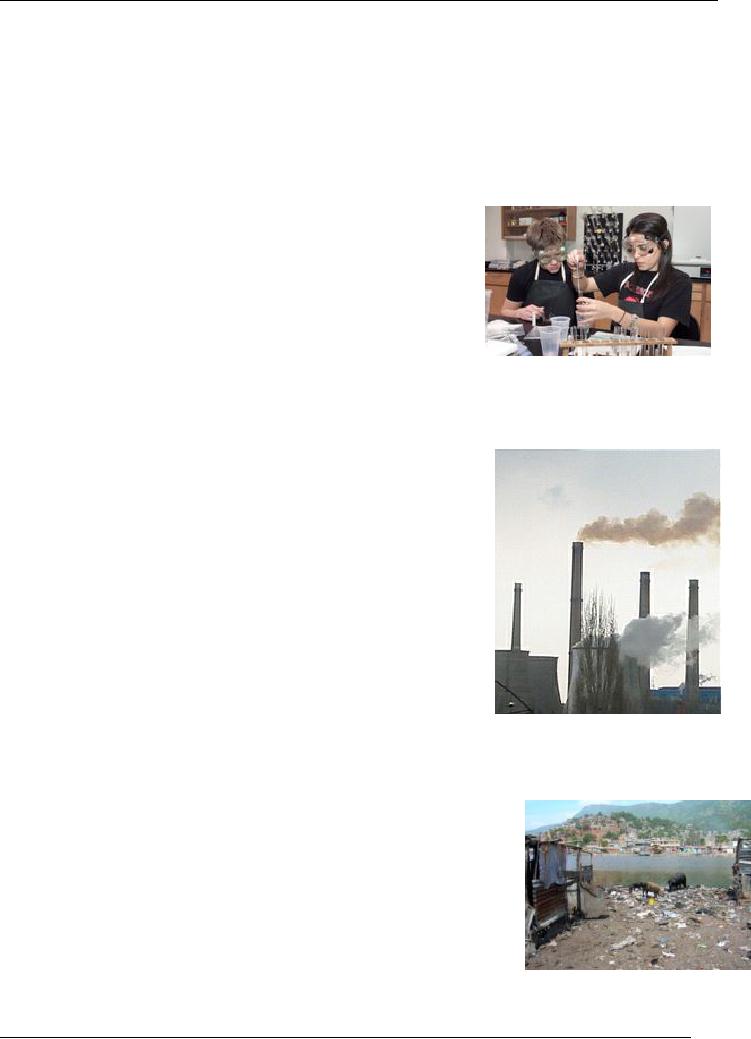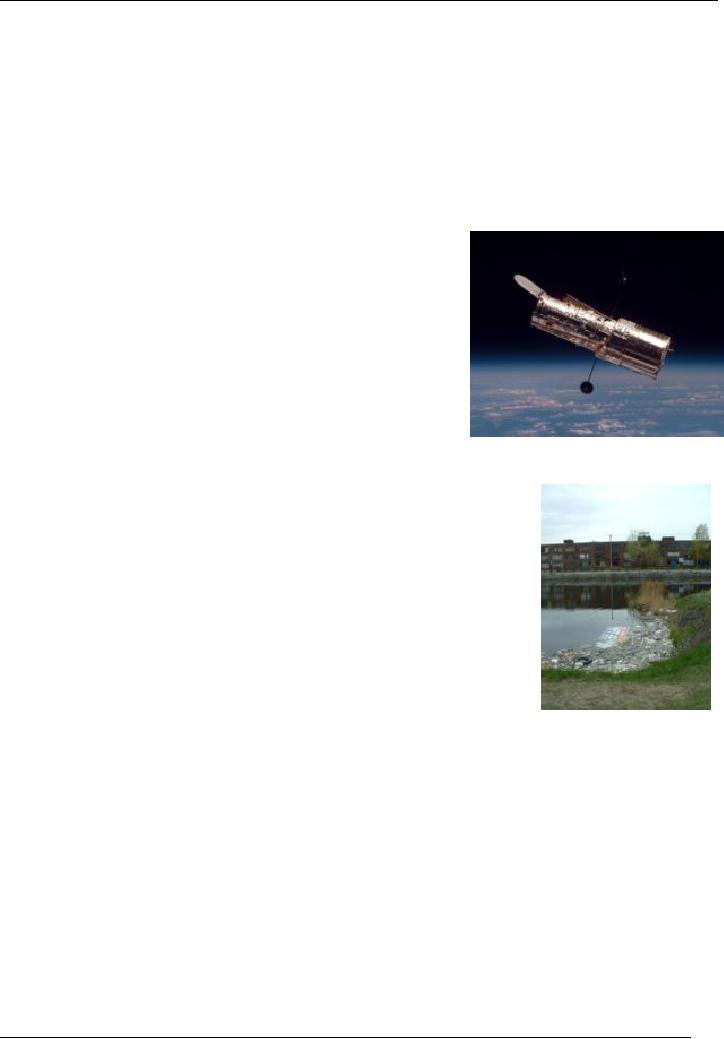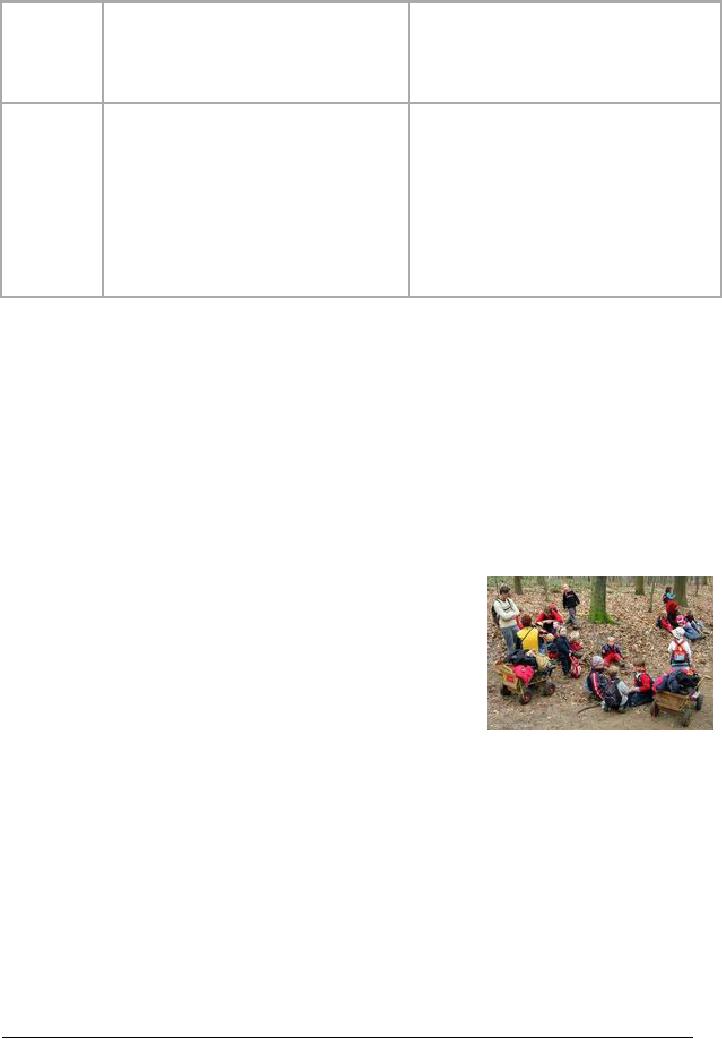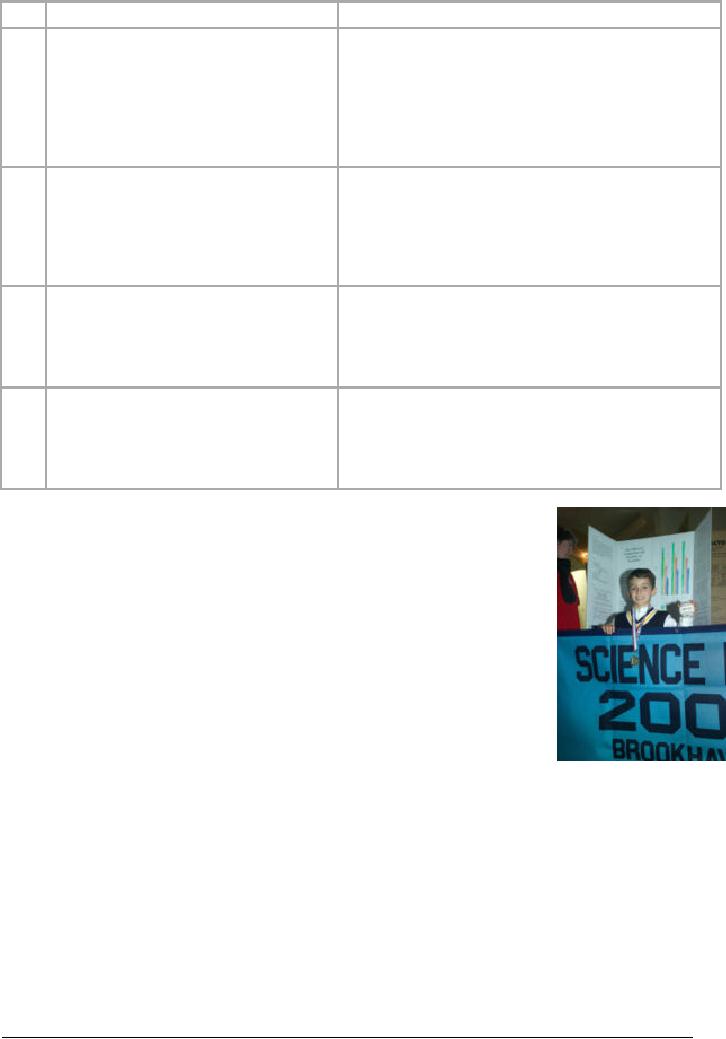 |

Human
Resource Development (HRM-627)
VU
Lesson
31
SCIENCE
& TECHNOLOGY EDUCATION
Science,
technology, society and environment
(STSE) education,
originates from the science
technology
and
society (STS) movement in science
education. This is an outlook on science
education that emphasizes the
teaching
of scientific and hello technological
developments in their cultural, economic,
social and political
contexts.
In this view of science education,
students are encouraged to
engage in issues pertaining to the
impact
of
science on everyday life and
make responsible decisions about
how to address such issues
(Solomon, 1993
and
Aikenhead, 1994).
Science
technology and society (STS)
The
STS movement has a long
history in science education
reform, and
embraces
a wide range of theories about the intersection
between
science,
technology and society (Solomon and
Aikenhead, 1994; Pedretti
1997).
Over the last twenty years,
the work of Peter Fensham, the
noted
Australian
science educator, is considered to
have heavily contributed to
reforms
in science education. Fensham's
efforts included giving
greater
prominence
to STS in the school science curriculum
(Aikenhead, 2003).
The
key aim behind these
efforts was to ensure the development of
a
broad-based
science curriculum, embedded in the socio-political
and cultural contexts in which it
was
formulated.
From Fensham's point of
view, this meant that
students would engage with
different viewpoints
on
issues concerning the impact of
science and technology on everyday
life. They would also
understand the
relevance
of scientific discoveries, rather than
just concentrate on learning scientific
facts and theories
that
seemed
distant from their realities
(Fensham, 1985 &
1988).
However,
although the wheels of change in
science education had been
set
in
motion during the late
1970s, it was not until the
1980s that STS
perspectives
began to gain a serious
footing in science curricula, in
largely
Western
contexts (Gaskell, 1982).
This occurred at a time when
issues
such
as, animal testing,
environmental pollution and the
growing impact of
technological
innovation on social infrastructure, were
beginning to raise
ethical,
moral, economic and political
dilemmas (Fensham, 1988
and
Osborne,
2000). There were also
concerns among communities
of
researchers,
educators and governments
pertaining to the general
public's
lack
of understanding about the interface between
science and society
(Bodmer,
1985; Durant et
al. 1989
and Millar 1996). In
addition, alarmed
by
the poor state of scientific literacy
among school students,
science
educators
began to grapple with the
quandary of how to prepare
students
to
be informed and active
citizens, as well as the scientists,
medics and
engineers
of the future (e.g. Osborne,
2000 and Aikenhead, 2003).
Hence,
STS
advocates called for reforms
in science education that
would equip students to understand
scientific
developments
in their cultural, economic, political
and social contexts. This
was considered important
in
making
science accessible and meaningful to
all students -- and, most
significantly, engaging them in real
world
issues
(Fensham, 1985; Solomon, 1993; Aikenhead,
1994 and Hodson
1998).
Goals
of STS
The
key goals of STS
are:
An
interdisciplinary approach to science
education, where there is a
seamless
integration
of economic, ethical, social
and political aspects of scientific
and
technological
developments in the science
curriculum.
Engaging
students in examining a variety of real
world issues and
grounding
scientific
knowledge in such realities. In today's
world, such issues
might
include
the impact on society of: global
warming, genetic engineering,
animal
testing,
deforestation practices, nuclear testing
and environmental
legislations,
such
as the EU Waste Legislation or the Kyoto
Protocol.
Enabling
students to formulate a critical
understanding of the interface between
science, society and
technology.
113

Human
Resource Development (HRM-627)
VU
Developing
students' capacities and confidence to
make informed decisions, and
to take responsible action to
address
issues arising from the
impact of science on their daily
lives.
Scope
and emphasis
Over
the last two decades, STS
curricula have taken a variety of forms.
These emphasize a particular aspect
of
STS
according to the socio-political environment in
which they are formulated, as well as the
particular views
of
curriculum developers on STS education
and what is considered valid knowledge in
a science curriculum
(Solomon
& Aikenhead 1994 and Aikenhead,
2003). For example, in
Canada and Israel, STS goals
directed
towards
understanding environmental issues
were given greater emphasis.
Hence, the addition of "E" to
STS,
producing
STSE and STES respectively.
Whereas, in Belgium, goals focusing on
ethics were given
greater
prominence
in STS education, and
resulted in the publication of the
journal Science
Technologies Ethique Societ�,
(Aikenhead,
2003). However, for the most
part, STS curricula are
bound by an overarching curriculum
framework.
This reflects the three curriculum
content areas for STS
education described by Hodson
(1998):
Learning
science and
technology: acquiring
and developing
conceptual
and theoretical knowledge in science and
technology, and
gaining
a familiarity with a range of
technologies.
Learning
about science and
technology: developing
an
understanding
of the nature and methods of
science and technology,
an
awareness of the complex interactions among
science, technology,
society
and environment, and a sensitivity to the
personal, social and
ethical
implications of particular technologies.
Doing
science and
technology:
engaging in and developing
expertise
in
scientific inquiry and problem solving;
developing confidence
and
competence
in tackling a wide range of "real world"
technological
tasks.
STSE
Education
There
is no uniform definition for
STSE education. As mentioned before,
STSE
is
a form of STS education, but
places greater emphasis on the
environmental
consequences
of scientific and technological developments. In
STSE curricula,
scientific
developments are explored from a variety
of economic, environmental,
ethical,
moral, social and political
(Kumar and Chubin, 2000
& Pedretti, 2005)
perspectives.
At
best, STSE education can be
loosely defined as a movement that
attempts to
bring
about an understanding of the interface between
science, society,
technology
and the environment. A key
goal of STSE is to help
students realize
the
significance of scientific developments in
their daily lives and foster
a voice of
active
citizenship (Pedretti & Forbes,
2000).
Improving
scientific literacy
Over
the last two decades, STSE
education has taken a prominent
position in the
science
curricula of different parts of the
world, such as Australia, Europe, the UK
and USA (Kumar &
Chubin,
2000). In Canada, the inclusion of STSE
perspectives in science education
has largely come about as
a
consequence
of the Common
Framework of science learning outcomes,
Pan Canadian Protocol for
collaboration on School
Curriculum
(1997)[1].
This document highlights a need to
develop scientific literacy in conjunction
with
understanding
the interrelationships between science, technology,
and environment. According to
Osborne
(2000)
& Hodson (2003), scientific literacy
can be perceived in four
different ways:
Cultural:
Developing the capacity to read about
and understand issues
pertaining to science and technology
in
the
media.
Utilitarian:
Having the knowledge, skills and
attitudes that are essential
for a career as scientist,
engineer or
technician.
Democratic: Broadening
knowledge and understanding of science to include the
interface between
science,
technology
and society.
Economic:
Formulating knowledge and skills
that are essential to the
economic growth and
effective
competition
within the global market
place.
Rationale
and goals
114

Human
Resource Development (HRM-627)
VU
In
the context of STSE education, the
goals of teaching and learning
are largely directed towards
engendering
cultural
and democratic notions of scientific
literacy. Here, advocates of STSE
education argue that in
order to
broaden
students understanding of science, and
better prepare them for active
and responsible citizenship in
the
future, the scope of science
education needs to go beyond learning
about scientific theories, facts
and
technical
skills. Therefore, the fundamental aim of
STSE education is to equip students to
understand and
situate
scientific and technological developments in
their cultural, environmental, economic,
political and social
contexts
(Solomon & Aikenhead, 1994; Bingle & Gaskell,
1994; Pedretti 1997 & 2005).
For example, rather
than
learning about the facts and theories of
weather patterns, students
can explore them in the context of
issues
such as global warming. They can
also debate the environmental, social,
enconomic and
political
consequences
of relevant legislation, such as the Kyoto
Protocol. This is thought to provide a
richer, more
meaningful
and relevant canvas against
which scientific theories and
phenomena relating to weather
patterns
can
be explored (Pedretti et
al. 2005).
In
essence, STSE education aims to develop
the following skills and
perspectives (Aikenhead, 1994;
Pedretti,
1996;
Alsop & Hicks,
2001):
Social
responsibility
Critical
thinking and decision making
skills
The
ability to formulate sound
ethical and moral decisions
about issues arising from
the impact of science on
our
daily lives
Knowledge,
skills and confidence, to
express opinions and take
responsible action to address real
world issues
in
science
Curriculum
content
Since
STSE education has multiple
facets, there are a variety of
ways in which it can be
approached in the
classroom.
This offers teachers a degree of
flexibility, not only in the
incorporation of STSE perspectives
into
their
science teaching, but in integrating
other curricular areas such as
history, geography, social
studies and
language
arts (Richardson & Blades,
2001). The table below
summarizes the different approaches to
STSE
education
described in the literature (Ziman, 1994
& Pedretti, 2005):
Summary
table: Curriculum content
Approach
Description
Example
Learning
about inventions or scientific
theories
through
the lives and worlds of
famous
scientist.
Students can research their
areas of
interest
and present them through
various
A
way of humanizing science. This
approach
activities:
e.g. drama-role play, debates
or
examines
the history of science
through
documentaries.
Through this kind
of
concrete
examples, and is viewed as
way of
Historical
exploration,
students examine the
values,
demonstrating
the fallibility of science
and
beliefs
and attitudes that influenced the
work
scientists.
of
scientists, their outlook on the
world, and
how
their work has impacted
our present
circumstances
and understanding of science
today.
Using
historical narratives or stories
of
scientific
discoveries to concretely
examine
Helps
students formulate an understanding
of
philosophical
questions and views
about
the
different outlooks on the nature
of
science.
For example, "The Double
Helix" by
science,
and how differing viewpoints
on the
James
D. Watson is an account of the
Philosophical
nature
and validity of scientific
knowledge
discovery
of DNA. This historical narrative
can
influence
the work of scientists
--
be
used to explore questions such
as: "What is
demonstrating
how society directs and
reacts
science?
What kind of research was
done to
to
scientific innovation.
make
this discovery? How did this
scientific
development
influence our lives? Can
science
help
us understand everything about
our
115

Human
Resource Development (HRM-627)
VU
world?"
Such an exploration reveals the
social
and
historical context of philosophical
debates
about
the nature of science -- making this
kind
of
inquiry concrete, meaningful and
applicable
to
students' realities.
Real
life events within the
community, at the
This
is the most widely applied approach
to
national
or international level, can be
examined
STSE
education.
It
stimulates
an
from
political, economic, ethical
and social
understanding
of the science behind
issues,
perspectives
through presentations,
debates,
and
the consequences to society and
the
role-play,
documentaries and narratives.
Real
Issues-based
environment.
A multi-faceted approach to
life
events might include: the impact
of
examining
issues highlights the complexities
environmental
legislations, industrial
accidents
of
real-life debates. Students also
become
and
the influence of particular scientific or
aware
of the various motives for
decisions that
technological
innovations on society and
the
address
environmental issues.
environment.
Opportunities
and challenges of STSE
education
Although
advocates of STSE education keenly
emphasize its merits in
science education, they also
recognize
inherent
difficulties in its implementation. The
opportunities and challenges of
STSE education have
been
articulated
by Hughes (2000) and Pedretti &
Forbes, (2000), at five
different levels, as described
below:
Values
& beliefs: The
goals of STSE education may
challenge the values and
beliefs of students and
teachers -
-
as well as conventional, culturally
entrenched views on scientific and
technological developments.
Students
gain
opportunities to engage with,
and deeply examine the
impact of scientific development on their
lives from
a
critical and informed perspective. This
helps to develop students' analytical
and problem solving capacities,
as
well
as their ability to make
informed choices in their
everyday lives.
As
they plan and implement STSE
education lessons, teachers
need to provide a balanced
view of the issues
being
explored. This enables students to
formulate their own thoughts,
independently explore other
opinions
and
have the confidence to voice
their personal viewpoints. Teachers
also need to cultivate safe,
non-
judgmental
classroom environments, and must
also be careful not to
impose their own values
and beliefs on
students.
Knowledge
& understanding: The
interdisciplinary nature of STSE
education
requires teachers to research
and gather information from
a
variety
of sources. At the same time, teachers
need to develop a sound
understanding
of issues from various
disciplines -- philosophy,
history,
geography,
social studies, politics, economics,
environment and
science.
This
is so that students' knowledge base
can be appropriately scaffolded
to
enable them to effectively engage in
discussions, debates and
decision-
making
processes.
This
ideal raises difficulties.
Most science teachers are
specialized in a particular field of
science. Lack of time
and
resources may effect how
deeply teachers and students
can examine issues from
multiple perspectives.
Nevertheless,
a multi-disciplinary approach to science
education enables students to gain a
more rounded
perspective
on the dilemmas, as well as the
opportunities, that science
presents in our daily
lives.
Pedagogic
approach: Depending
on teacher experience and
comfort levels, a variety of pedagogic
approaches
based
on constructivism can be used to
stimulate STSE education in the
classroom. As illustrated in the table
below,
the pedagogies used in STSE
classrooms need to take
students through different
levels of understanding
to
develop their abilities and confidence to
critically examine issues and
take responsible action.
Teachers
are often faced with the
challenge of transforming classroom
practices from task-oriented
approaches
to
those which focus on
developing students' understanding and
transferring agency for learning to
students
(Hughes,
2000). The table below is a
compilation of pedagogic approaches
for STSE education described
in the
literature
(e.g. Hodson, 1998; Pedretti &
Forbes 2000; Richardson &
Blades, 2001):
Summary
table: Classroom
practice
116

Human
Resource Development (HRM-627)
VU
Level
Description
Examples
of Pedagogies
Students
work in groups to research
information on
various
aspects of an event or innovation to illustrate
its
Appreciating
the societal impact of scientific
impact
on society e.g. biotechnology,
nuclear testing.
and
technological change and
recognizing
1
Students
can use role-play, concept
mapping, posters,
that,
to some extent, science and
technology
gallery
exhibitions, presentations or
documentaries to
are
culturally determined.
display
research findings and
express their
own
viewpoints.
Recognizing
that decisions about scientific
Debates
or Town Hall-style meetings, role-play
interviews,
and
technological development are taken
in
case-studies,
seminars, multi-media or documentary
style
pursuit
of particular interests. Weighing
out
presentations,
can all be used to present
the political,
2
the
pros and cons of scientific
and
social,
scientific and economic factors
that led to decisions
technological
developments and their
links
about
the impact of a particular scientific or
technological
with
wealth and power.
development.
Students
can present their opinions
on issues through:
Developing
one's views and establishing
presentations, debates, group
discussions, poster
3
personal
value positions on the effect of a presentations
and writing. Through such
activities,
scientific
or technological development.
students
can also be encouraged to
express their hopes,
concerns
and decisions as informed
citizens.
This
is a fundamental aspect of STSE education
and could
Preparing
for taking action.
Having
involve:
letter writing campaigns,
writing a letter to the
examined
the
complexity
of
the
4
editor
of a newspaper, developing a Webpage,
presenting
development,
students explore and
plan
debates
or holding meetings for the
local community,
ways
of addressing the issues.
developing
personal action plans.
Time
& resources: The
multi-faceted approach of STSE education
requires
teachers
to move beyond conventional curriculum materials,
and explore resources
in
other disciplines -- social
geography, history, social
studies and politics. A
teacher's
time and effort are needed
to collect such resources, develop
background
knowledge,
and integrate them for
successful and effective STSE
lesson planning.
Assessment
& evaluation: The
broad, inquiry-based approach to STSE
education
requires
tools that assess students
understanding of issues and
skills-development
(e.g.
problem solving, analysis, communication,
presentation), rather than
their
decisions
or opinions. Hence, STSE
education calls for the use
of qualitative rather
than
quantitative assessment
methods.
It
is difficult to develop assessment or evaluation
criteria for such a
personalized,
objective,
view of science. Teachers
need to clarify for students
that it is their
efforts
and
skill development that are being
assessed, rather than opinions. Examples
of
assessment
tools might include quizzes,
questionnaires, journal writing,
development of portfolios,
observations
and one-on-one exit interviews.
Source:
wikipedia
117
Table of Contents:
- INTRODUCTION TO HUMAN RESOURCE DEVELOPMENT:The Concept and its Dimensions, Targets of Development
- FOUNDATIONS OF HUMAN BEHAVIOR:Attitudes, Personality, Emotional Intelligence
- PERCEPTION:Attribution Theory, Shortcuts Frequently Used in Judging Others
- INTRINSIC MOTIVATION:Why Choose Big Five Framework?, THE OUTCOME OF FIVE FACTOR MODEL
- FIVE FACTOR MODEL:The Basis of Intrinsically Motivated Behavior, Intrinsic Motivation and Values
- MOTIVATION:EARLY THEORIES OF MOTIVATION, Designing Motivating Jobs
- The Motivation Process:HOW TO MOTIVATE A DIVERSE WORKFORCE?,
- INTERPERSONAL COMMUNICATION:PRINCIPLES OF INTERPERSONAL COMMUNICATION
- THE WORLD BEYOND WORDS:DIFFERENCES BETWEEN VERBAL AND NONVERBAL COMMUNICATION, MINDFUL LISTENING
- TRANSACTIONAL ANALYSIS:EGO STATES, Parent Ego State, Child Ego State
- TYPES OF TRANSACTIONS:Complementary Transactions, Crossed Transactions, Ulterior Transactions
- NEURO-LINGUISTIC-PROGRAMMING
- CREATE YOUR OWN BLUEPRINT
- LEADERSHIP:ORGANIZATIONAL DEMOCRACY
- LEADERSHIP:Environment and Strategic Leadership Link, Concluding Remarks
- UNDERSTANDING GROUP BEHAVIOR:Stages of Group Development, Advantages of Group Decision Making
- UNDERSTANDING TEAM BEHAVIOR:TYPES OF TEAMS, Characteristics of Effective Teams,
- EMOTIONAL FACET:PHYSICAL FACET
- HUMAN RESOURCE DEVELOPMENT & THE ROLE OF GOVERNACE:Rule of Law, Transparency,
- HUMAN RESOURCE DEVELOPMENT:The Concept and Its Dimensions, Targets of Development
- HUMAN DEVELOPMENT INDEX (HDI):Methodology,
- REPORTS:Criticisms of Freedom House Methodology, GROSS NATIONAL HAPPINESS
- SECTORS OF A SOCIETY: SOME BASIC CONCEPTS:PUBLIC SECTOR, PRIVATE SECTOR
- NON GOVERNMENTAL ORGANIZATIONS (NGOS):Types, Methods, Management, Citizen organization
- HEALTH SECTOR:Health Impact of the Lebanon Crisis, Main Challenges,
- A STUDY ON QUALITY OF PRIMARY EDUCATION BACKGROUND AND RATIONALE
- ADULT EDUCATION:Lifelong learning
- THE PRACTICAL PERSPECTIVE OF ADULT EDUCATION:Problems of Adult Literacy, Strategies for Educating Adults for the Future
- TECHNICAL & VOCATIONAL EDUCATION:VET Internationally, Technical Schools
- ASSESSING THE LINK BETWEEN INTELLECTUAL CAPITAL FORMATION AND PERFORMANCE OF A UNIVERSITY
- SCIENCE & TECHNOLOGY EDUCATION:Social responsibility, Curriculum content
- ENVIRONMENT:Dark Greens and Light Greens, Environmental policy instruments
- HDI AND GENDER SENSITIVITY:Gender Empowerment Measure
- THE PLIGHT OF INDIAN WOMEN:
- ENTREPRENEURSHIP:Characteristics of entrepreneurship, Advantages of Entrepreneurship
- A REVISIT OF MODULE I & II
- HUMAN DEVELOPMENT & ECONOMIC GROWTH (1975 TO 2003):
- PUBLIC PRIVATE PARTNERSHIP:Origins, The Desired Outcomes of PPPs
- PRINCIPLES OF PUBLIC PRIVATE PARTNERSHIP (PPP):Situation in Pakistan,
- DEVOLUTION REFORMS – A NEW SYSTEM OF GOVERNMENT:
- GOOD GOVERNANCE:Participation, Rule of law, Accountability
- MACROECONOMIC PROFILE OF A COUNTRY: EXAMPLE ECONOMY OF PAKISTAN
- COORDINATION IN GOVERNANCE: AN EXAMPLE OF EU, The OMC in Social Inclusion
- MOBILIZING REGIONAL EDUCATIONAL RESOURCES: THE ASEAN UNIVERSITY NETWORK, A CASE STUDY
- GOVERNMENT PRIORITIES AND POLICIES:Role of Government, Socio Cultural Factors in Implementing HRD Programs